On-line LOMA/LOMR-F Tutorial
Revisions to National Flood Insurance Program Maps: Application Forms and Instructions for (C)LOMAs and (C)LOMR-Fs
LOMR-F Tutorial
On-line LOMA/LOMR-F Tutorial
OMB: 1660-0015
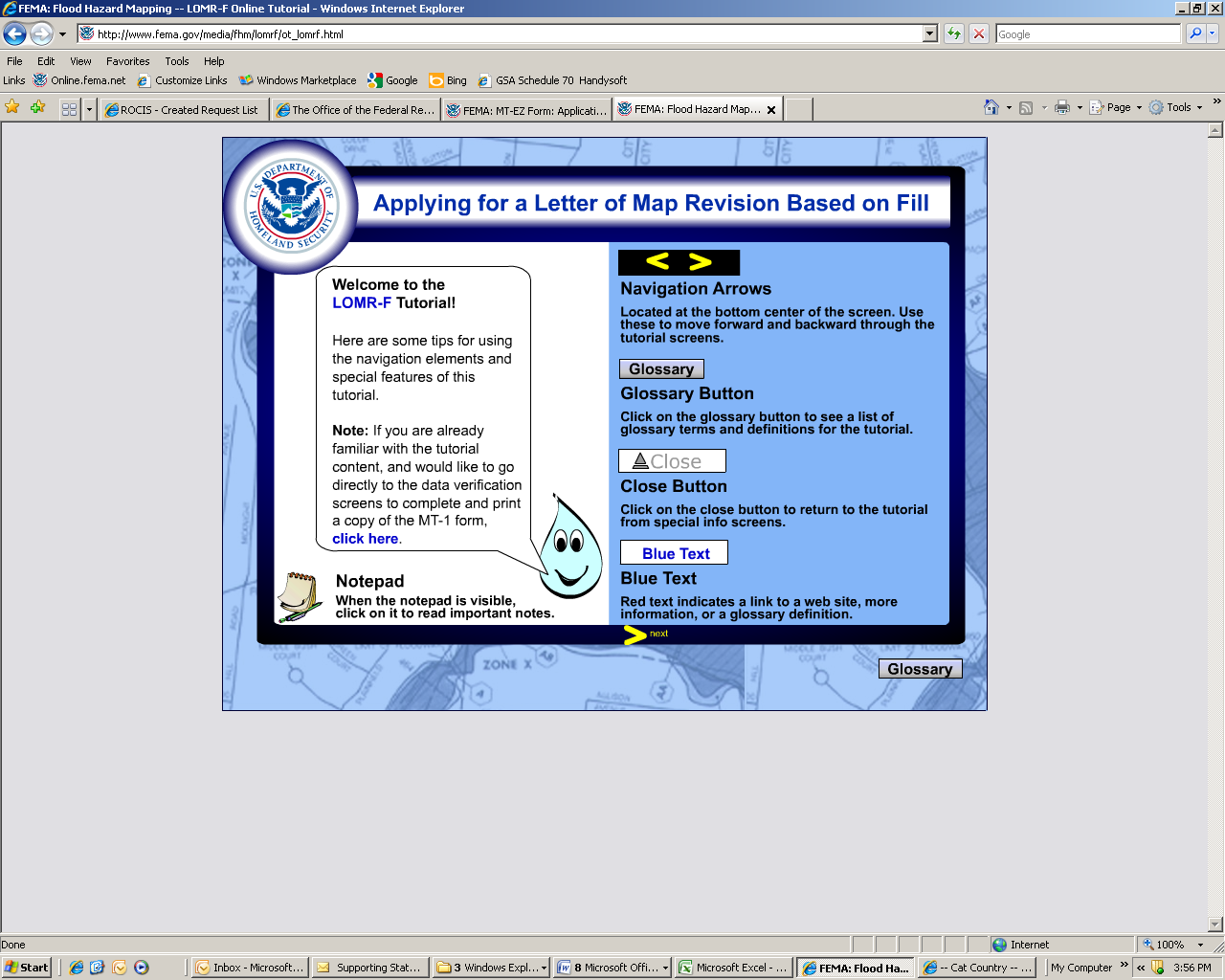
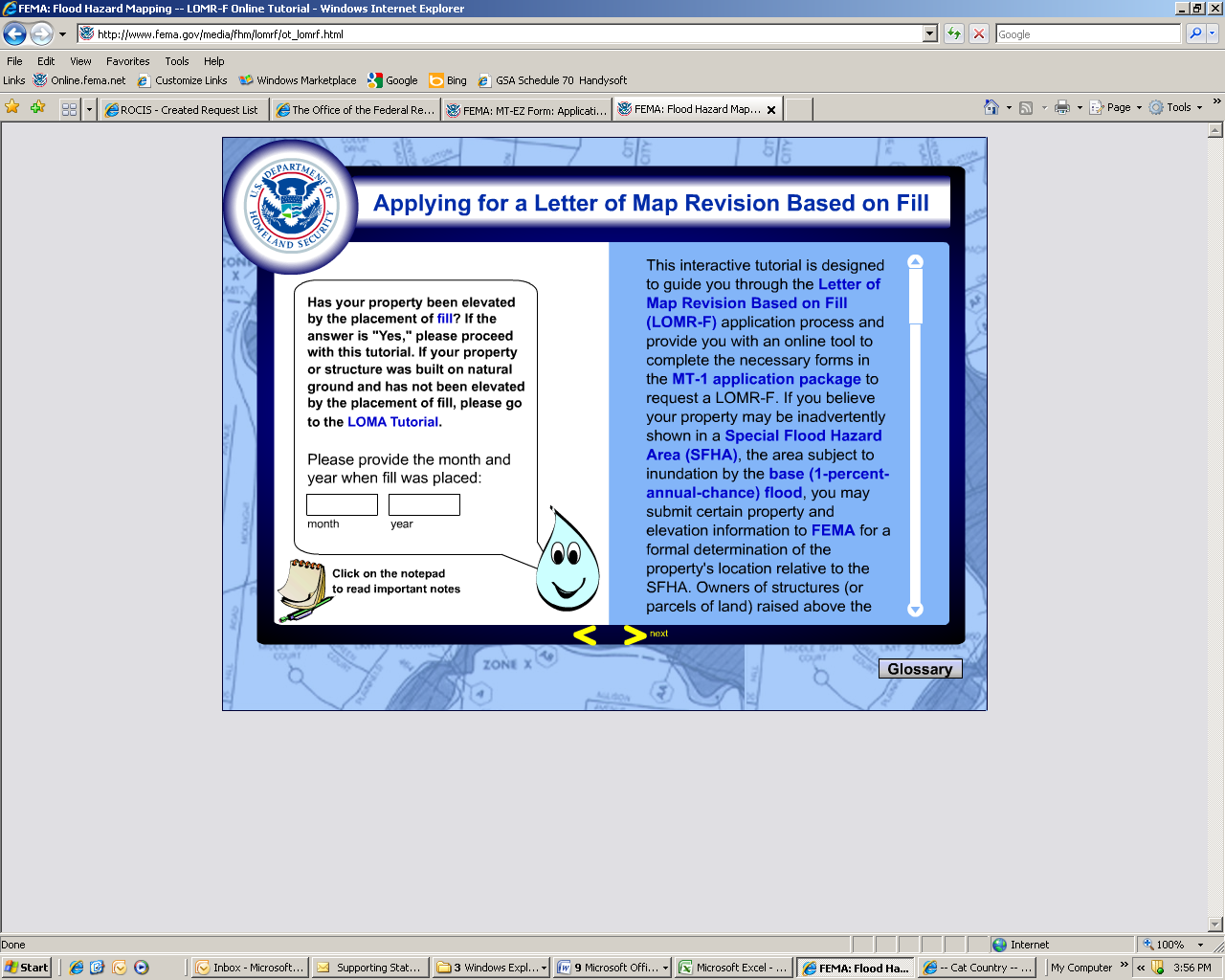
You may send the LOMR-F removal determination to your lender to request that the Federal flood insurance requirement for the property be removed. (The Federal flood insurance requirement applies to all structures located in SFHAs that carry a federally backed mortgage loan.) Please keep in mind that lenders may, as part of their standard business practices, require flood insurance as a condition of any loan. We encourage you to consult with your lender before requesting a LOMR-F to find out if the flood insurance requirement will be waived if a LOMR-F is issued. If the determination does not result in the removal of the property from the SFHA (non-removal), the Federal flood insurance purchase requirement would still apply. Please note that, even if your lender does not waive the flood insurance requirement for the property, insurance rates are usually lower for structures determined to be outside the SFHA.
Also note that even if FEMA issues a LOMA or LOMR-F that removes your property from a flood zone in which flood insurance is federally required, it does not mean that the risk of flooding has been eliminated. Homeowners insurance does not provide any coverage for losses resulting from floods, which may occur outside the SFHA. Therefore, canceling or not renewing your flood insurance policy could have disastrous consequences, leaving you with no insurance protection from future flood losses.
Floods occur, with all too tragic frequency, in areas designated at moderate or minimal flood risk. In fact, 25 percent of all flood insurance claims occur in these areas. That is why FEMA encourages you to keep your coverage, even if you are no longer required to do so by law. The good news is that you may be eligible to pay much less for your flood insurance coverage if your property is removed from the SFHA. Contact your insurance agent to discuss the pricing benefits you may enjoy if FEMA issues a LOMA or LOMR-F. You may obtain additional information about flood insurance on the NFIP Web site.
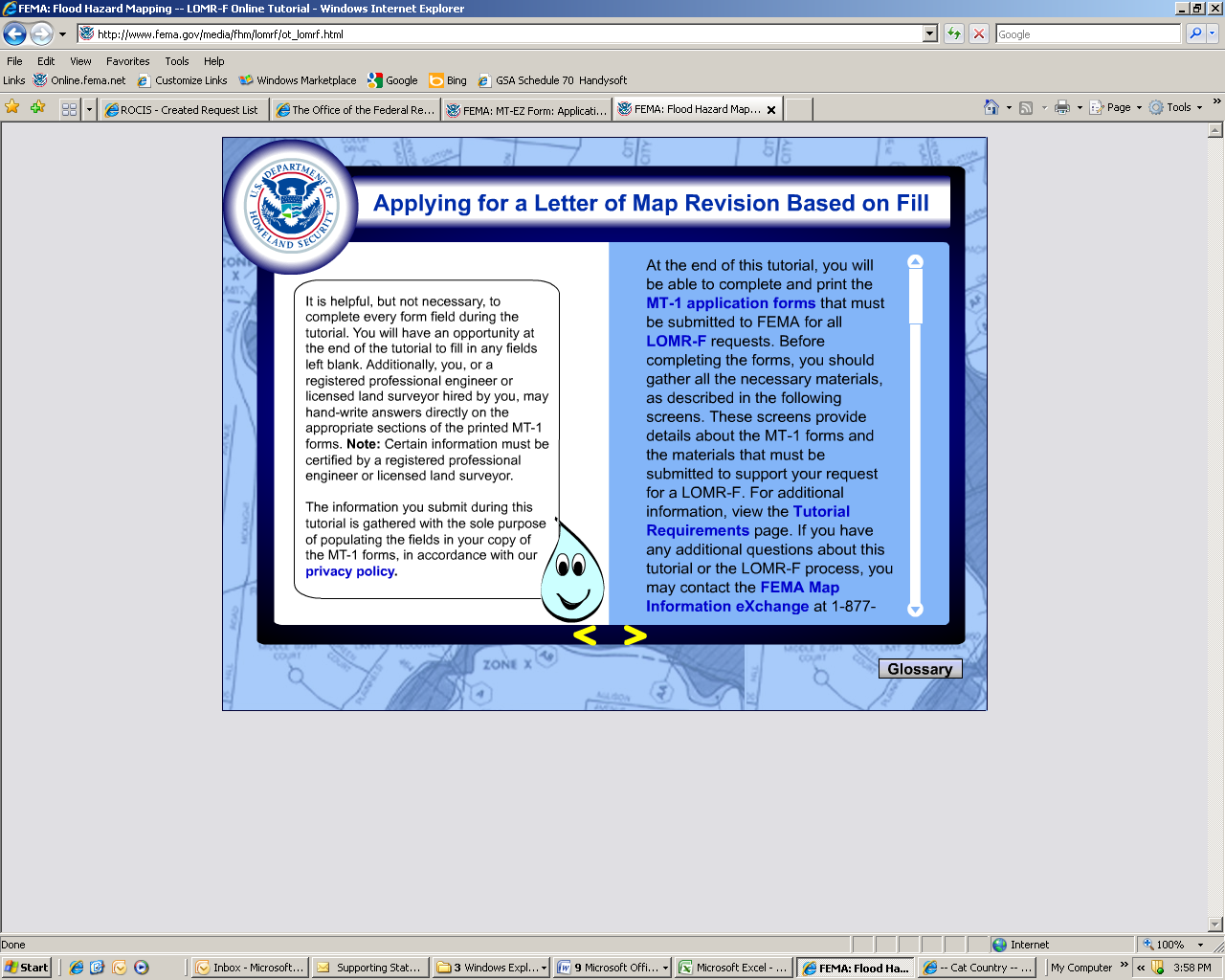

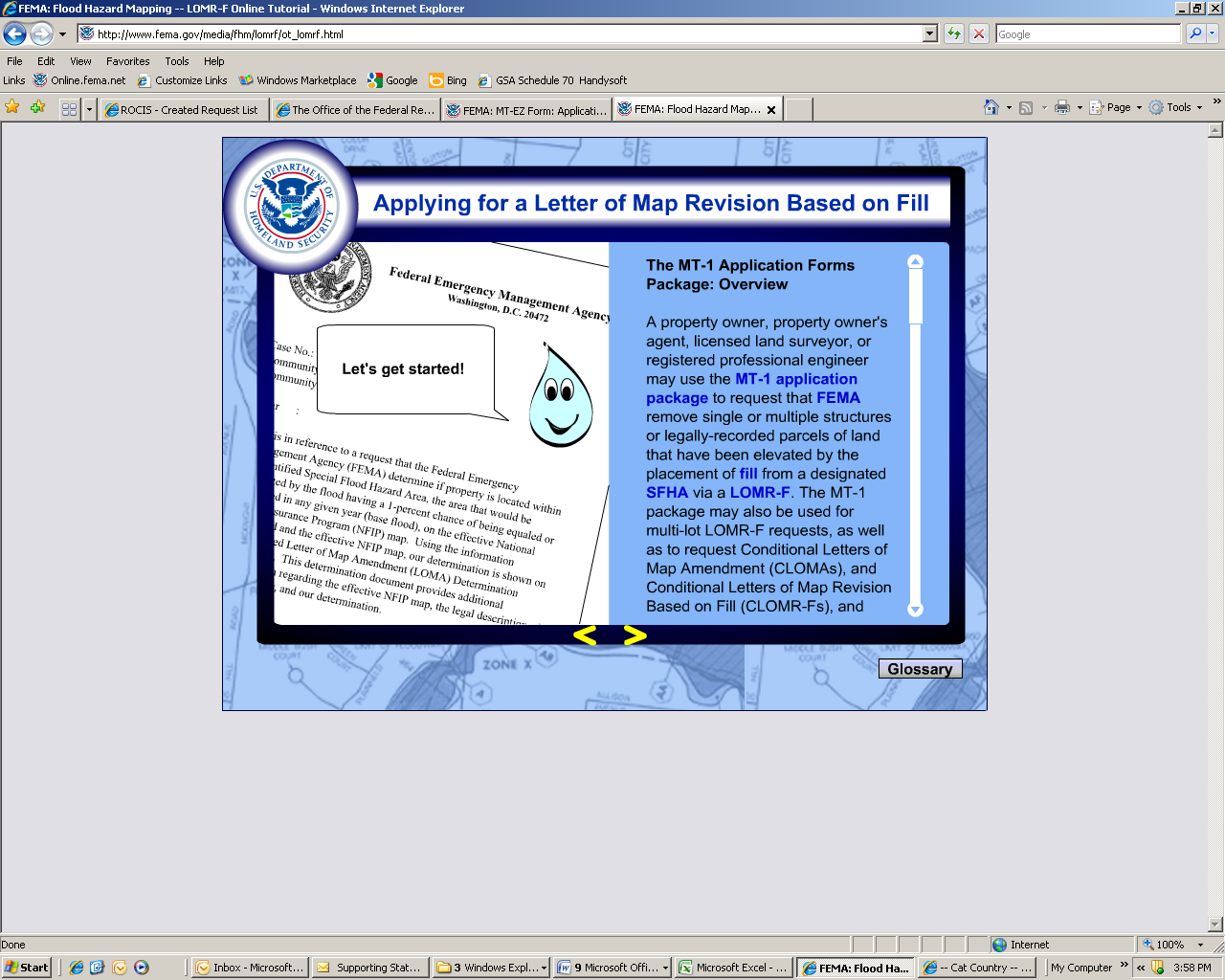
A property owner, property owner's agent, licensed land surveyor, or registered professional engineer may use the MT-1 application package to request that FEMA remove single or multiple structures or legally-recorded parcels of land that have been elevated by the placement of fill from a designated SFHA via a LOMR-F. The MT-1 package may also be used for multi-lot LOMR-F requests, as well as to request Conditional Letters of Map Amendment (CLOMAs), and Conditional Letters of Map Revision Based on Fill (CLOMR-Fs), and LOMAs for multiple lots or parcels of land. This tutorial will focus on LOMR-F requests for single-lot structures or properties. For information on the other types of requests mentioned, please consult the MT-1 instructions.
To request a LOMR-F for a single lot or structure, the following, completed forms from the MT-1 forms package must be submitted:*
- Form 1 (Property Information Form)
- Form 2 (Elevation Form)*
- Form 3 (Community Acknowledgment Form)*
- Payment Information Form and appropriate fee
The following sections provide additional detail about each of these forms, and the supporting information that must be provided. The forms in the MT-1 package should not be used for:
- Requests involving changes in BFEs
- Requests involving changes in regulatory floodway boundary delineations
- Requests for properties in alluvial fan areas
- Requests involving property and/or structures that have been elevated by fill placed within the regulatory floodway, channelization projects, or bridge/culvert replacement projects; or
- Requests involving changes in coastal high hazard areas (V zones).
For such requests, the community must complete the MT-2 application forms package and submit a request for a Letter of Map Revision (LOMR), instead.
Please note that Form 2 must be completed by a registered professional engineer or licensed land surveyor, and Form 3 must be completed and signed by your community's floodplain manager or other community official responsible for floodplain management. Throughout the tutorial, you will have the opportunity to fill in the appropriate forms in the MT-1 application package, and print, sign, and provide them to your engineer or surveyor and local community officials for completion before submitting your application package to FEMA for processing.
IMPORTANT INFORMATION FOR REQUESTORS: The Community Acknowledgment Form (Form 3 of the MT-1 forms package) must be completed for all requests involving the placement of fill, existing or proposed, or requests that are inadvertently included in the NFIP regulatory floodway. The form must be completed and signed by the community official responsible for floodplain management in the community.
Under 44 CFR 60.3(a)(2), you are required to ensure, prior to issuing a floodplain development permit, that an applicant has obtained all necessary Federal and State permits related to development. The most commonly required Federal permits are wetlands permits under Section 404 of the Clean Water Act of 1972 and incidental take permits under Section 10 of the Endangered Species Act of 1972. Necessary State permits vary depending on the State. If you are not sure if a wetlands permit is required, refer the applicant to your U.S. Army Corps of Engineers District Office. If the proposed development impacts on threatened or endangered species or you are unsure if it does, have the applicant consult with the nearest U.S. Fish and Wildlife Service field office.
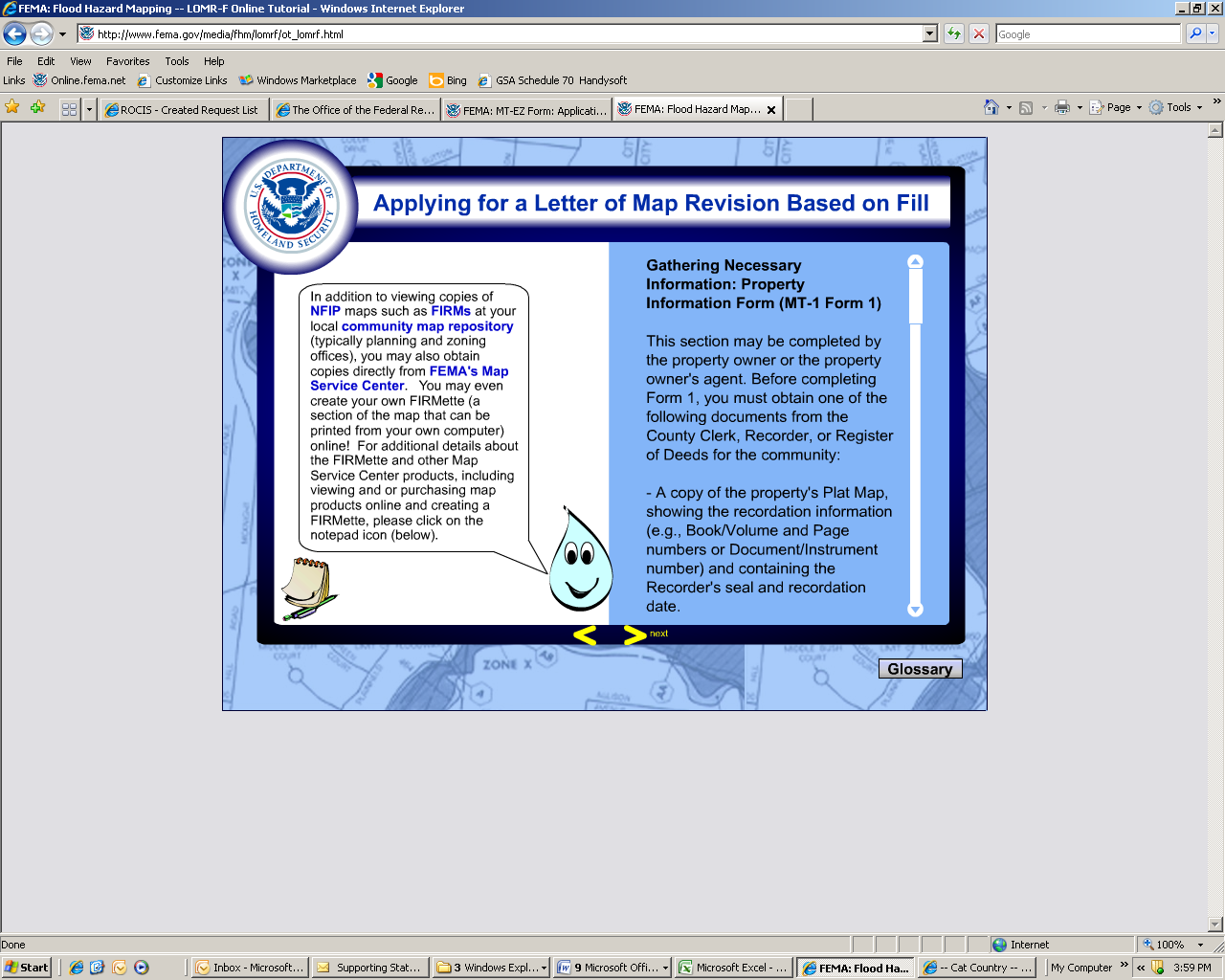
Gathering Necessary Information: Property Information Form (MT-1 Form 1)
This section may be completed by the property owner or the property owner's agent. Before completing Form 1, you must obtain one of the following documents from the County Clerk, Recorder, or Register of Deeds for the community:
- A copy of the property's Plat Map, showing the recordation information (e.g., Book/Volume and Page numbers or Document/Instrument number) and containing the Recorder's seal and recordation date.
- A copy of the property Deed, showing the recordation information (e.g., Book/Volume and Page numbers or Document/Instrument number) containing the Recorder's seal and recordation date, accompanied by a tax assessor's or other suitable map showing the surveyed location of the property with respect to local streets and watercourses.
You must also obtain a copy of portion of the the effective FIRM panel and/or Flood Boundary and Floodway Map (FBFM), if applicable, on which the property location has been accurately plotted.* The copy of the map panel must include the panel's title block. To determine which panel shows the property, consult the FIRM Index, which shows the outline of the mapped community and the numbers and layout of the individual FIRM panels. After locating the general area of the property by referring to major streets and streams in the vicinity, read the corresponding FIRM panel number from the Index. View example
You may obtain (and/or purchase) some, or all, of this information from FEMA's Map Service Center, as referenced on the left. Alternatively, you may view a copy of the FIRM at the community map repository or from the community official or agency responsible for floodplain management. For additional information on interpreting the information shown on a FIRM, we encourage you to view our tutorial, "How to Read a FIRM".
Alternatively, you may go to FEMA's Map Service Center to view a scanned copy of the map online, and purchase a variety of map products from FEMA's Map Service Center. You may also reproduce the section of the map that shows your property by creating a FIRMette at no cost. You may submit a copy of the FIRMette with your LOMA request to satisfy the requirement for a copy of the portion of the effective FIRM that shows the location of your property. For additional information about the FIRMette, including step-by-step instructions for creating one, please review the information provided via the notepad icon on the left.
All LOMR-F requests must also include the completed MT-1 Form 2, Elevation Form; and MT-1 Form 3, Community Acknowledgment Form. (If an NFIP Elevation Certificate for a structure has been completed, it may be submitted instead of Form 2.) All maps submitted with this, or any other type of request, must include a map scale and North arrow. You must also submit the appropriate fee, accompanied by the Payment Information Form, if paying by Visa or Mastercard.
Move forward to begin filling out the form!
*In certain instances, a certified site plan showing the location of the structure/property may be required, if the plat map or a house location survey does not display a precise location of the structure/property.
| File Type | application/vnd.openxmlformats-officedocument.wordprocessingml.document |
| Author | jramsayj |
| File Modified | 0000-00-00 |
| File Created | 2023-08-01 |
© 2026 OMB.report | Privacy Policy